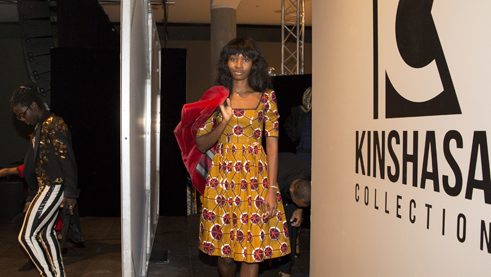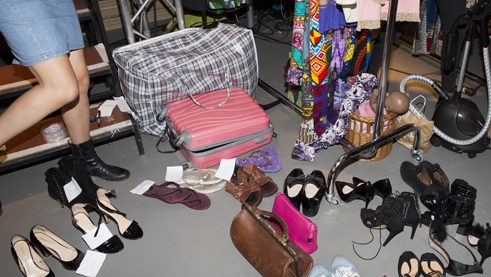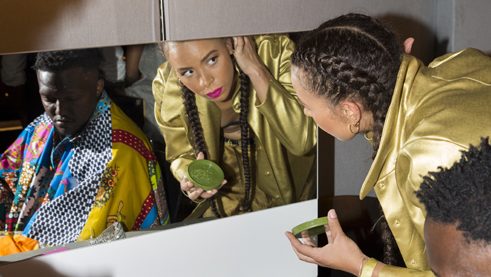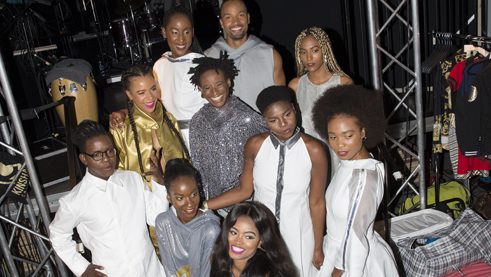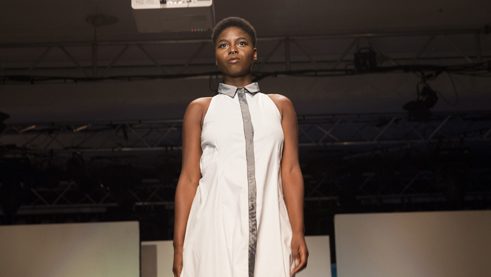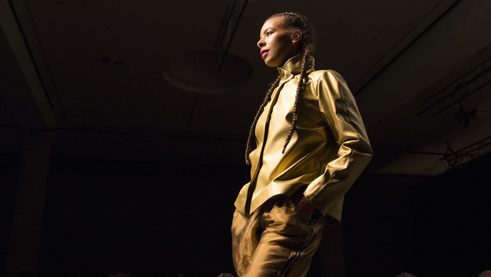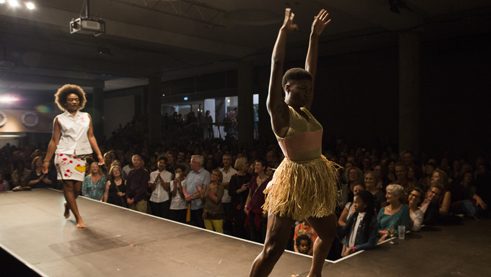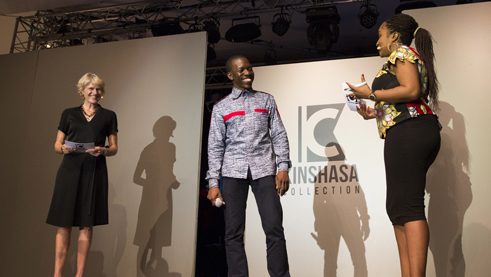Kinshasa Collection
In the Realm of the Cuts
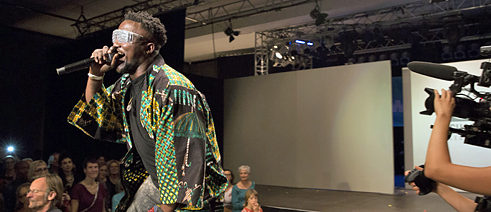
The Goethe-Institut and Pong Film presented the Kinshasa Collection at Haus der Kulturen der Welt.
Are those glasses on the nose of the performer on the runway at HKW? They are so densely covered in rhinestones it’s hard to imagine that they let any light through. Or are those just glittering fabric remnants? Listeners catch a few words like Yamamoto and Versace from his rapping. The musician and cultural manager Wilfried Luzele AKA LovaLova is chanting the intro for the Kinshasa Collection. Even years later, anyone who has been to the Congolese city of Kinshasa remains impressed by the fashionable spirit they encountered there. The city dresses up; the people in the streets are a demonstrative contrast to the grime of the Central African megalopolis.
It is the models’ delight that immediately lights the spark this Friday night. As if countering the Heidi Klum cliché, the Kinshasa Collection showed itself in a rousing firework presentation that was emitted not least from the apparel being shown. Well-defined cuts, daring appliques, bright colours and stylish delight in mixing and matching: The designers showed off their creations in a skilful balancing act between provocative design and the fun of parody. Runway or theatre stage – what’s the difference anyway?
The fashion from Kinshasa is not created using patterns from the prevailing start-up phantasmagoria. People are designing and tailoring in the city markets, the creatives on the corner are, above all, also resourceful entrepreneurs of their own products. Kinshasa is one of the largest transhipment centres in the world for plagiarised fashion, and ever since Congo became the most important African trading partner for China, a large amount of textile goods are imported from there.
This is all discussed in the six-part web series of the project funded by the Federal Cultural Foundation, but the main role is played by the Congolese life principle of kizóbázoba, a kind of existential coalescing from which one can take all one needs. It is a bricolage of the art of survival that is not seeking the right style, but finds it in passing. Hence the fashion creators from Kinshasa don’t use the logos of the big international labels – better a bigger version of them – in order to imitate them. Instead, it’s all about incorporation and disassociation. If it looks good, it doesn’t matter which idea may have preceded it all. But kizóbázoba can also be understood as a modern form of business. Many of the young designers move about Kinshasa as mobile boutiques. When a passer-by likes what he or she sees, the required fabric is ordered by mobile phone from China and manufactured a few days later. The distinction between designer wares and traditional African fabrics is fiction anyway, because what we think are typical African fabrics today were originally imports from Java.
It may be that the spontaneous enthusiasm reaped by the Kinshasa Collection on Friday at HKW is ultimately the result of a post-colonial view. The enlightened European draws a lovely picture of Congo as a creative metropolis in which beautiful people understand how to make the best of themselves. But in fact, exactly these questions need to be posed in the postcolonial discourse, which so far has mainly been concerned with the legal or illegitimate acquisition of museum inventories. So, that’s more kizóbázoba for the Humboldt Forum. The web series will be continued until 22 September at www.kinshasacollection.com.
This article was first published in Berliner Zeitung, 14 August 2017
